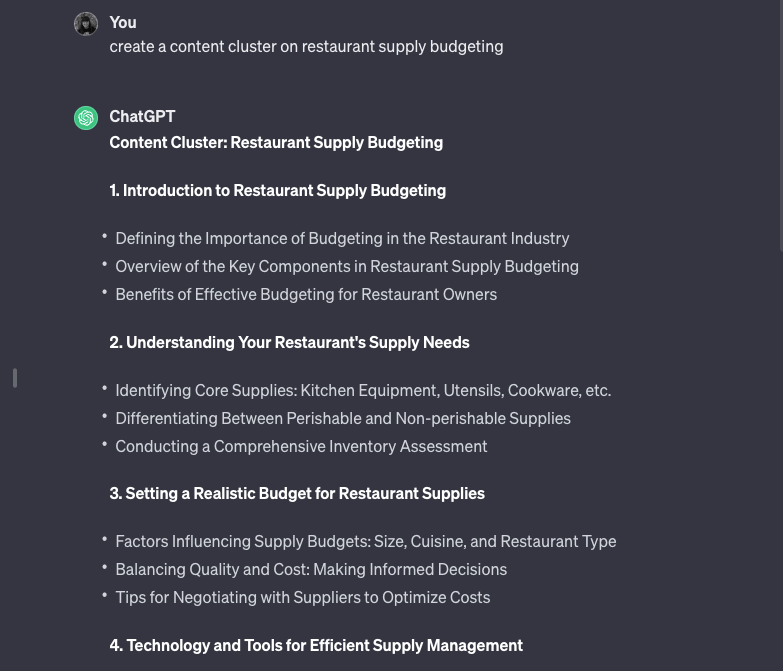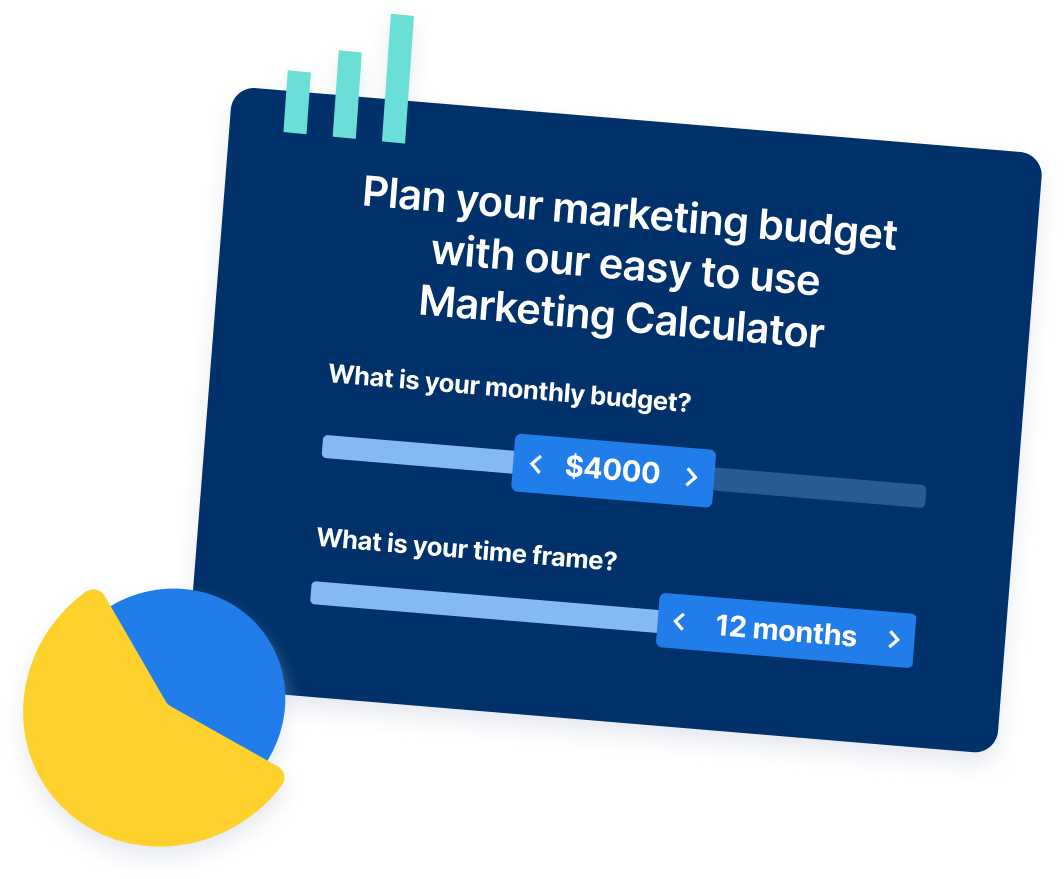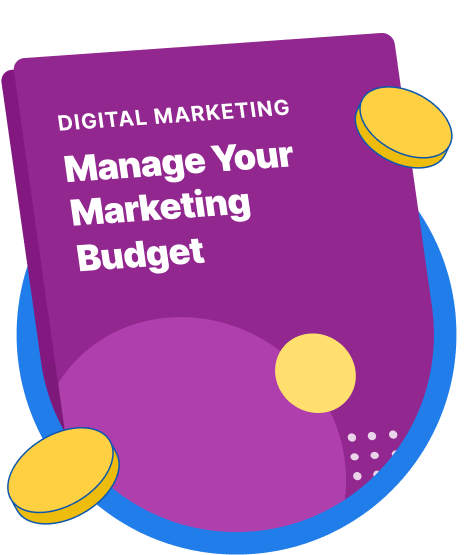-
 Published: Dec 20, 2023
Published: Dec 20, 2023
-
 12 min. read
12 min. read
-
 Macy Storm
Macy Storm Senior Content Creator
Senior Content Creator
- Macy is a marketing writer with over five years of experience creating content for dozens of industries including food and beverage, home services, and education. She also specializes in creating SEO and PPC content. Her work has been featured by Search Engine Journal, HubSpot, Entrepreneur, Clutch, and more. In her free time, Macy enjoys trying new crafts and reading comic books.
B2B Digital Marketing Trends for 2024
- Taking advantage of artificial intelligence (AI)
- Leaning into video marketing, especially short-form videos
- Using automation to speed up time-consuming tasks
- Doing authentic marketing
- Personalizing the audience’s experience
- Focusing on sustainability marketing
- Expanding on account-based marketing (ABM)
- Making data-backed decisions
- Putting data privacy first
- Strengthening the middle and bottom of your funnel
- Keeping your marketing strategy flexible
Marketing is a key component of your business-to-business (B2B) company’s success. For your marketing plan to stay effective, you must stay on top of the latest B2B digital marketing trends. Following these trends will ensure your strategy stays competitive and helps your business grow its bottom line.
On this page, we’ll cover the top trends in B2B marketing for 2024, which includes:
- Taking advantage of artificial intelligence (AI)
- Leaning into video marketing, especially short-form videos
- Using automation to speed up time-consuming tasks
- Doing authentic marketing
- Personalizing the audience’s experience
- Focusing on sustainability marketing
- Expanding on account-based marketing (ABM)
- Making data-backed decisions
- Putting data privacy first
- Strengthening the middle and bottom of your funnel
Keep reading to learn more about these trends!
P.S. Don’t forget to join our 200,000 marketing pros who receive the latest tips and tricks on marketing through our email newsletter!
Don’t miss our Marketing Manager Insider emails!
Join 200,000 smart marketers and get the month’s hottest marketing news and insights delivered straight to your inbox!
Enter your email below:
Inline Subscription Form – CTA 72
“*” indicates required fields
(Don’t worry, we’ll never share your information!)

1. Taking advantage of AI
First up on this list of B2B digital marketing trends, let’s talk about artificial intelligence. AI is taking the world by storm and continues to integrate into various aspects of business operations. Marketing is no exception.
If you want your B2B business to stay current in 2024, you’ll want to start exploring AI.
There are numerous popular tools you can start using to help enhance your marketing efforts:
- ChatGPT: This generative AI tool can help you create content clusters, code elements for your website, and more.

- Microsoft Bing AI: Use this AI chatbot to help generate fun social media captions, get content ideas, and more.
- MarketingCloudFX: MarketingCloudFX uses IBM Watson to process your marketing data and help you uncover more insights that power your marketing decisions.
- Drag: This email marketing tool uses artificial intelligence to help you create email templates, track email performance, and more!
Taking advantage of AI tools can help you speed up your marketing processes and create more effective campaigns that spark growth for your business!
Check out our blog post on the top AI tools to learn about more artificial intelligence tools you can invest in!
2. Leaning into video marketing, especially short-form videos
Trends in B2B marketing will change over time, but they often still involve strategies you know (and likely already invest in). For 2024, you’ll want to focus on your video marketing efforts.
Video content continues to dominate with its versatility and ability to present users with a lot of information in a short period. Here are some stats that show the power of videos:
- The average adult consumes 38 hours of video content each month
- 60% of social video viewers watch short videos on Facebook
- 167 million TikTok videos are watched in one minute
- Users spend 88% more time on pages with videos
As you can see, video content is what users want — a powerful way to catch their attention.
For 2024, you’ll want to focus on short-form videos for your video marketing strategies. With platforms like Instagram and TikTok continuing to rise in popularity, short-form videos are the way to go.
Not to mention, videos under two minutes long generate the most engagement, so you’ll want to spend some time developing short video content for your business.
Here are some tips to help you get started:
- Shoot your videos vertically: Short-form videos are designed for mobile devices. Make sure you shoot your videos vertically so mobile users have a great experience.

- Catch your audience’s attention from the beginning: Social media platforms are designed for users to continuously scroll through video content. You must catch your audience’s attention immediately to get them to stop scrolling and watch your content.
- Post content regularly: Posting short videos regularly will help you engage your audience and help your brand get recognized by more decision-makers.
3. Using automation to speed up time-consuming tasks
Next on this list of B2B marketing trends, let’s talk about marketing automation.
Automation will become a crucial component to the success of your B2B marketing strategy in 2024. This tactic involves using software to complete time-consuming marketing tasks automatically.
You can automate marketing processes like:
- Email management: You can use automation tools to help you send emails, track their performance, and more!
- Data collection and processing: Marketing automation tools are great for helping you collect campaign data and process it to uncover new business insights.
- Social media posting: A social media scheduling tool can help you automatically post content on your pages without skipping a beat.
- Segment leads: With automation tools, you can easily segment your leads and send them more personalized marketing materials.
There are dozens of tools on the market that can help you automate marketing processes. Nutshell, for example, is a B2B customer relationship management (CRM) platform that can automatically collect customer data, organize it, and use it to personalize customers’ experiences.

So, to take advantage of marketing automation in 2024, figure out what you want to automate and find the right tools to do the job.
4. Doing authentic marketing
One of the biggest B2B advertising trends this year is authentic marketing. In 2024, people are tired of superfluous content that doesn’t accurately represent a brand. They want to see brands generate authentic, genuine content that paints a picture of the company.
So, how can you market your brand authentically? Here are a few tips:
- Highlight your company’s mission and values: Your company’s mission and values tell people a lot about your business. Share those with your audience so they get a better picture of who you are as a company.
- Be transparent: Whether it’s your social media posts, emails, or information on your website, be transparent and honest with your audience. Your honesty will help you build trust.
- Create a style that’s uniquely yours: Try to emulate other businesses’ styles and tones won’t produce an authentic image of your brand. Create your unique style to help you stand out from your competition and present an accurate presentation of your brand.
If you want to see success with B2B marketing in 2024, prioritize the authentic presentation of your brand.
5. Personalizing the audience’s experience
One of the B2B digital marketing trends that continues to persist through the years is personalization. Decision-makers have more options than ever, so they don’t have to settle for companies that deliver generic advertising materials.
Personalization catches the attention of decision-makers and keeps them interested.
You can personalize numerous aspects of the marketing process, including:
- Advertisements and landing pages
- Website greetings
- Email subject lines
- Website search results
- Product recommendations
Personalization will help you engage your audience and pique interest in what you offer.
6. Focusing on sustainability marketing
A big upcoming B2B marketing trend is focusing on sustainability. At least 71% of Millennials and over 67% of Gen Zers believe that focusing on sustainability should be a top priority.
Considering that Millennials alone will represent 75% of the global workforce by 2025, there will be a shift in priorities for companies –– namely, a focus on sustainability.
So, it’s crucial that, when marketing your company, you highlight the aspects that surround sustainability. Do you use eco-friendly packaging or clean energy? Highlight those aspects of your business as a selling point to your audience.
7. Expanding on ABM
To continue this list of B2B digital marketing trends, let’s talk about account-based marketing. ABM involves creating highly-personalized campaigns targeted at specific clients or accounts.
In 2024, more companies will invest in ABM because of its effectiveness –– you’re targeting specific accounts that you know are interested in your products. It also enables you to deliver a personal experience that nudges those leads towards conversion.
So, if you don’t have an ABM strategy, you’ll want to create one. If you do, you’ll want to start spending more time developing your strategy and identifying new accounts to target.
Here are some tips for doing ABM successfully:
- Create focused content: A big part of ABM is personalization, including the content you create. Create custom content for your accounts to grab their interest and engage them.
- Check your funnel: Your sales funnel plays a crucial role in turning a lead into a sale. Take time to analyze your sales funnel and make sure it works for the accounts you’re targeting. If you need to adjust it for specific accounts, do it!
- Share client testimonials and case studies: Client testimonials are powerful for helping targeted accounts see what you can do to help them. You can share case studies and testimonials to help prospects better understand what it’s like to partner with your business.
8. Making data-backed decisions
When looking at all the B2B advertising trends, pay attention to this one: Making data-backed decisions. In today’s marketing world, you get so much data from your marketing campaigns –– you need to use it!
A tool like MarketingCloudFX will help you gather your marketing data, process it, and uncover insights about your audience, campaigns, and more! You can use this data to inform future marketing decisions.
Data-driven marketing offers numerous benefits, including:
- Engage prospects better: When you analyze your marketing data, you understand what does and doesn’t work for your audience. As a result, you deliver campaigns that better suit your audience.
- Improved campaign performance: Data enables you to understand what worked and didn’t work with your campaign. As a result, you can adjust and improve your campaigns, which leads to better performance.
- Increased clients: Data-backed campaigns engage prospects better, which leads to more of them becoming clients. As a result, you can grow your business by making data-backed decisions.
If you want your marketing campaign to be successful in 2024, start making data-backed decisions with your marketing.
9. Putting data privacy first
Next on this list of trends in B2B marketing, let’s talk about data privacy. People are becoming more concerned about data privacy, with companies like Meta under scrutiny for how they handle their data protection. The desire to protect data doesn’t stop at consumers –– it goes for businesses, too.
So, for 2024, focus on protecting your clients’ data. One great way to do this is to secure your website. Securing your website helps protect potential clients’ data from hackers and people with malicious intent.
You can secure your website by:
- Using a Secure Sockets Layer (SSL) certificate on your website
- Updating your website’s security software regularly
- Using strong passwords to protect important documents and information
- Continuously scanning your website for security issues
By protecting your website, you’ll help protect consumer data and make clients feel comfortable sharing their data with you.
10. Strengthening the middle and bottom of your funnel
A crucial component of your B2B marketing strategy is your sales funnel –– it helps you move people from prospect to client. The top of your funnel helps you obtain qualified leads, but your middle and bottom funnel play a crucial role in turning those leads into clients.
That’s why one of the top B2B digital marketing trends for 2024 is strengthening the middle and bottom of your funnel.
But how do you accomplish that task?
Here’s how you can improve the last steps of your funnel:
- Deliver personalized content: Content marketing is one of the most crucial strategies for engaging leads and nudging them toward conversion. Creating personalized content is an excellent way to nudge prospects down the funnel.
- Diversify your strategies: Don’t rely on just one marketing strategy to engage your audience. Use multiple tactics throughout the middle and bottom of your funnel to keep moving leads.
- Reduce friction: A significant hindrance at the bottom of the funnel is points of friction that make it hard for leads to convert. Look at your current sales process and identify these friction points to resolve them.
Optimizing the end of your sales funnel will help you turn more prospects into clients in 2024.
11. Staying flexible with your marketing
To wrap up this list of B2B marketing trends, let’s talk about staying flexible with your marketing. If there’s one thing to know about the world, it’s that things constantly change. From business priorities to budgets to marketing strategies, it’s rare that things stay the same.
With things constantly changing, it’s crucial that you stay flexible with your B2B marketing. You need to be open to adapting your strategies to meet the needs of your potential clients. Remember –– no two clients are alike, which means you need to keep your options open and adjust your marketing strategy as needed.
Additionally, don’t be afraid to take advantage of changes in the marketing space as they arise. Companies like Google and Meta are constantly adapting their offerings to deliver better products –– taking advantage of those improvements can be what gives you an edge over competitors that don’t want to change their approach.
Remaining flexible with your marketing ensures that you keep your strategy current and maximize results for your business.
Take advantage of these B2B digital marketing trends today
Now that you’ve seen the top B2B marketing trends for 2024, it’s time to start adjusting your marketing strategy to account for these trends. If you feel unsure about how to incorporate these B2B digital marketing trends, let the experts at WebFX help.
We have a team of over 500 marketing pros who stay on top of the latest marketing trends and help B2B businesses like yours maximize results from marketing. In fact, we’ve driven over $6 billion in revenue and 24 million leads for our clients in the past five years alone.
If you’re ready to earn more clients and grow your bottom line, contact us online or call us today at 888-601-5359 to speak with a strategist about our digital marketing services!
-
 Macy is a marketing writer with over five years of experience creating content for dozens of industries including food and beverage, home services, and education. She also specializes in creating SEO and PPC content. Her work has been featured by Search Engine Journal, HubSpot, Entrepreneur, Clutch, and more. In her free time, Macy enjoys trying new crafts and reading comic books.
Macy is a marketing writer with over five years of experience creating content for dozens of industries including food and beverage, home services, and education. She also specializes in creating SEO and PPC content. Her work has been featured by Search Engine Journal, HubSpot, Entrepreneur, Clutch, and more. In her free time, Macy enjoys trying new crafts and reading comic books. -

WebFX is a full-service marketing agency with 1,100+ client reviews and a 4.9-star rating on Clutch! Find out how our expert team and revenue-accelerating tech can drive results for you! Learn more
Try our free Marketing Calculator
Craft a tailored online marketing strategy! Utilize our free Internet marketing calculator for a custom plan based on your location, reach, timeframe, and budget.
Plan Your Marketing Budget
Table of Contents
- 1. Taking Advantage of AI
- 2. Leaning into Video Marketing, Especially Short-form Videos
- 3. Using Automation to Speed Up Time-consuming Tasks
- 4. Doing Authentic Marketing
- 5. Personalizing the Audience’s Experience
- 6. Focusing on Sustainability Marketing
- 7. Expanding on ABM
- 8. Making Data-backed Decisions
- 9. Putting Data Privacy First
- 10. Strengthening the Middle and Bottom of Your Funnel
- 11. Staying Flexible with Your Marketing
- Take Advantage of These B2B Digital Marketing Trends Today

Maximize Your Marketing ROI
Claim your free eBook packed with proven strategies to boost your marketing efforts.
Get the GuideTry our free Marketing Calculator
Craft a tailored online marketing strategy! Utilize our free Internet marketing calculator for a custom plan based on your location, reach, timeframe, and budget.
Plan Your Marketing Budget





